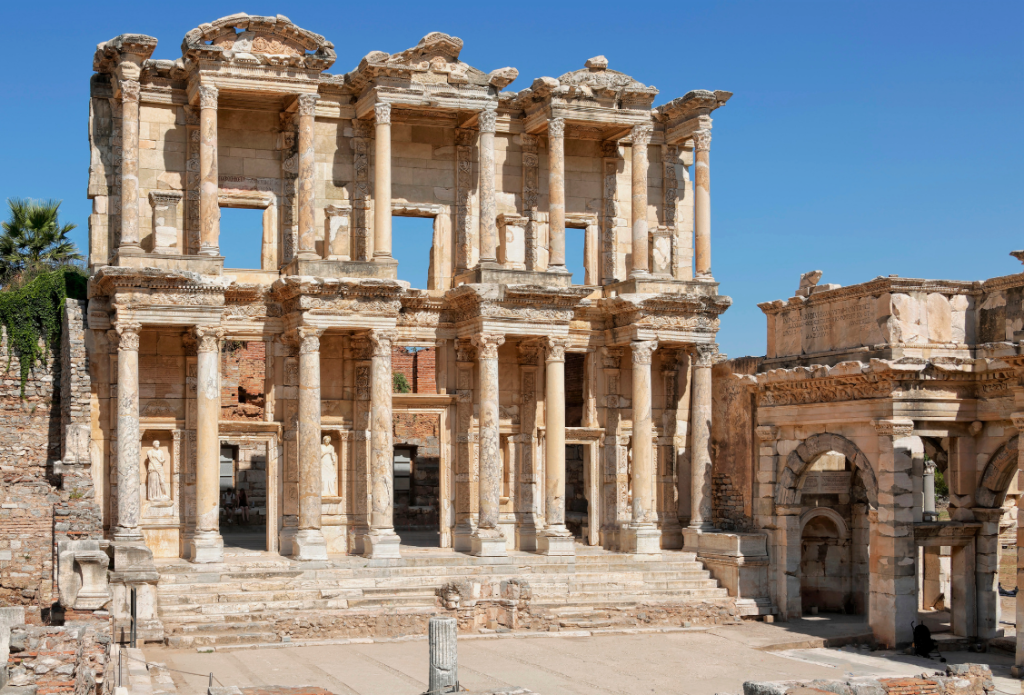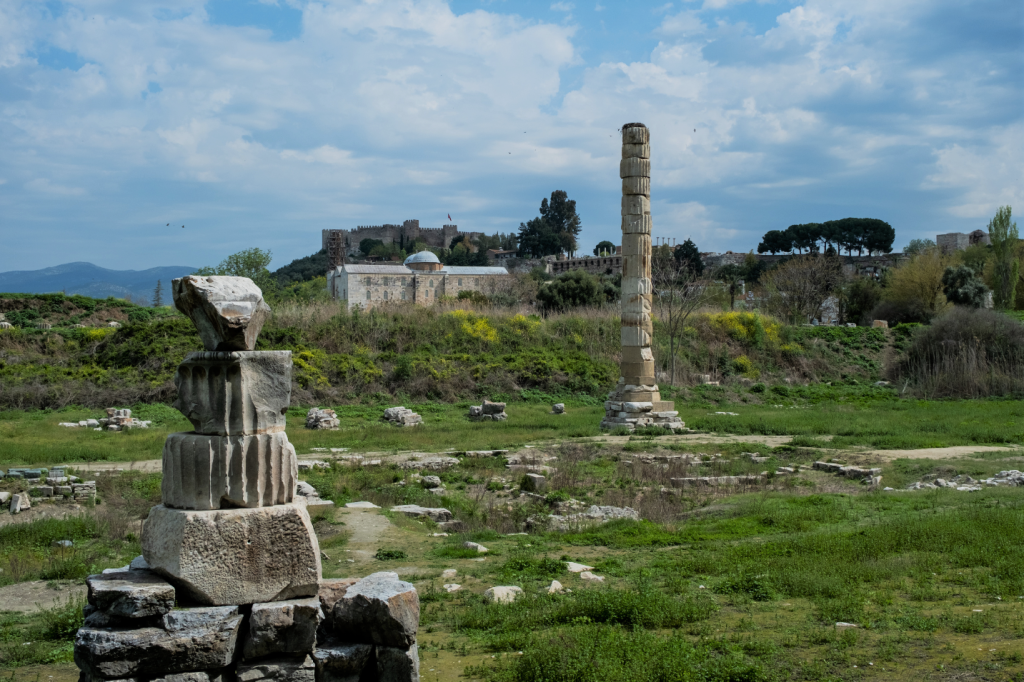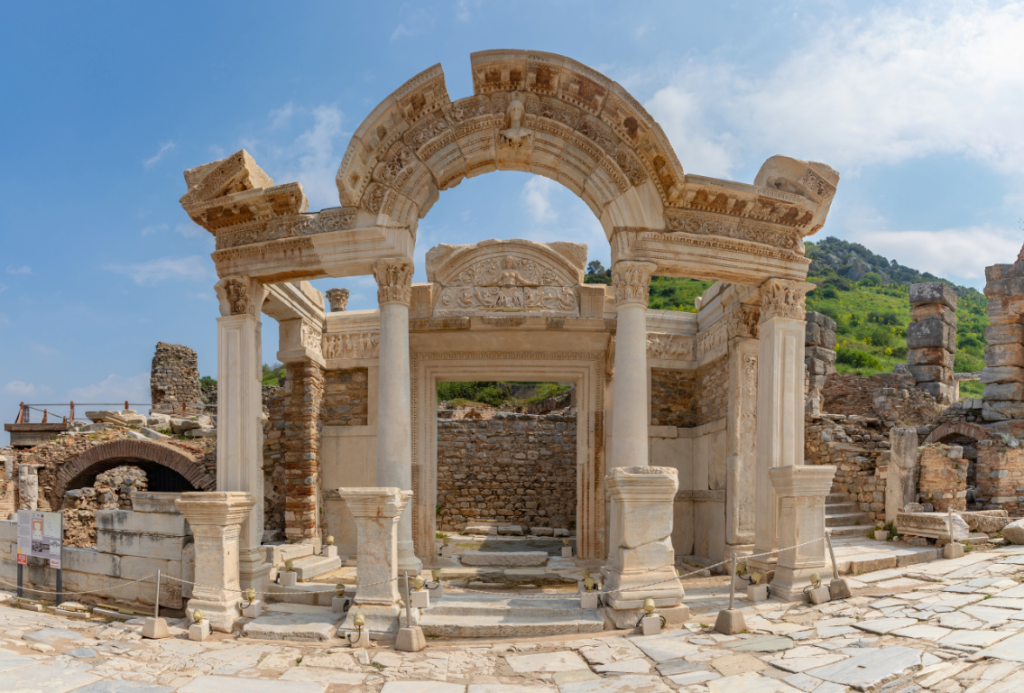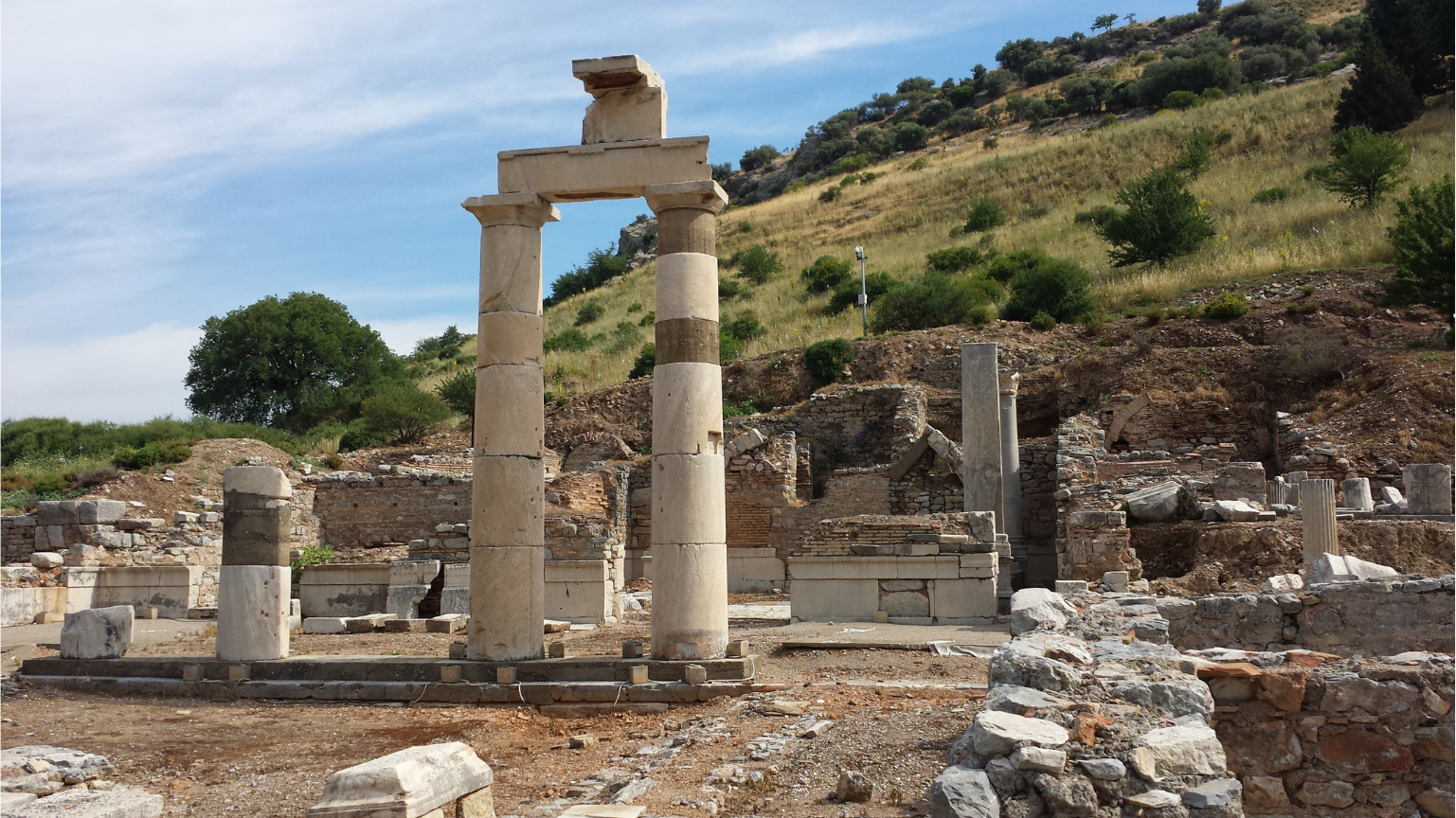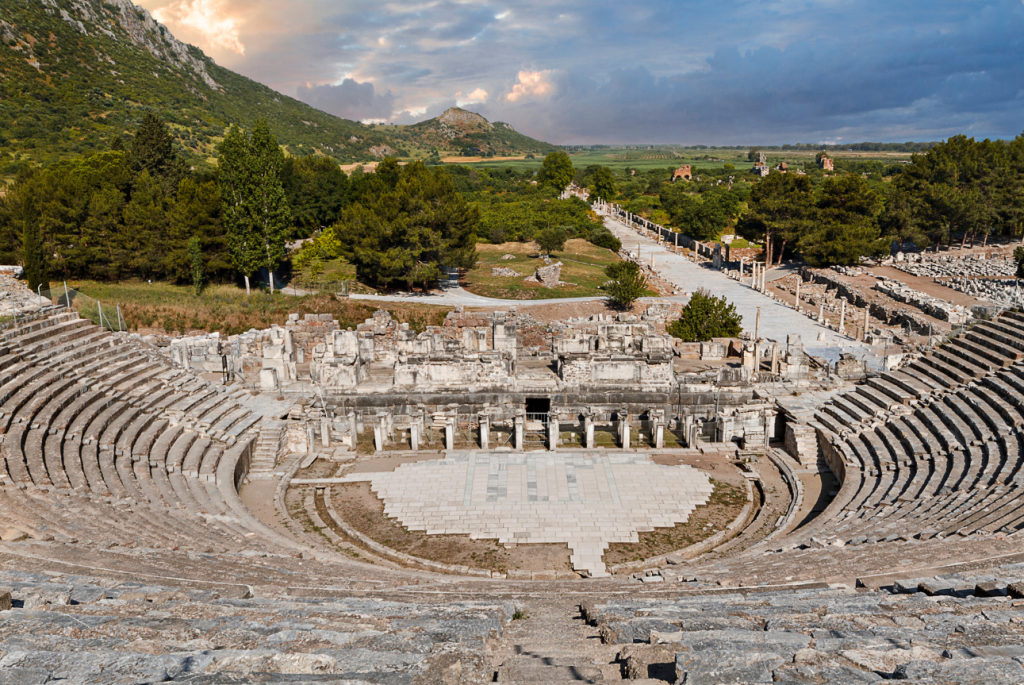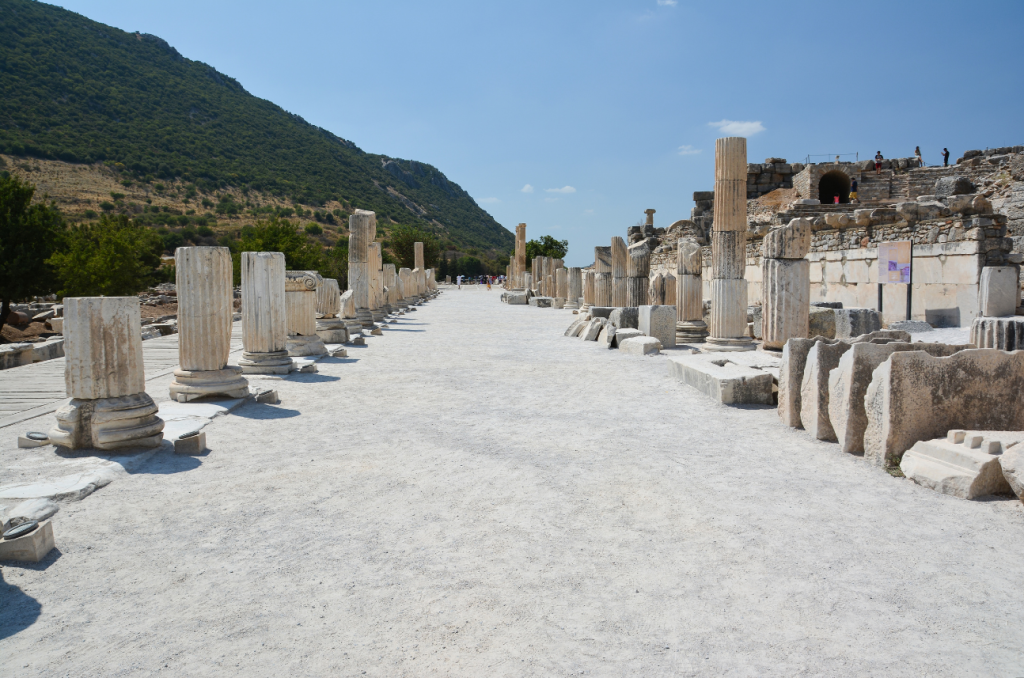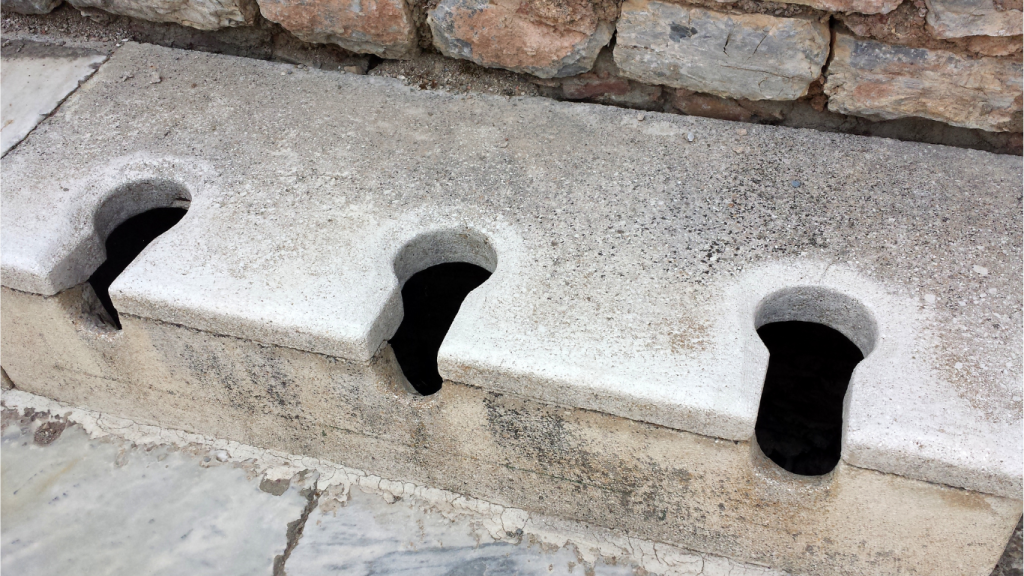Ephesus Ancient City – Anatolia – Izmir – Turkey
Located in the Selçuk district of Izmir, the ancient city of Ephesus is one of the most important ancient cities in Anatolia. Founded in the 10th century BC, Ephesus has been influenced by various civilizations throughout history, including the Lydians, Persians, Macedonians, and Romans. Ephesus Ancient City, situated approximately 70 kilometers from İzmir, is an important destination for history and archaeology enthusiasts.
What is the Importance of Ephesus?
Ephesus was one of the most significant settlements of the ancient era and was influenced by many civilizations. Therefore, the ruins and structures of the city are a valuable source for understanding the lifestyle, architecture, and religious beliefs of the ancient era. Additionally, it was an important center for Christianity and hosted the sermons of Saint Paul.
The ancient city of Ephesus holds great archaeological value. Excavations and research conducted here have provided important data for understanding life and civilization in the ancient period. These studies not only provide information about the ancient era to archaeologists and historians but also reach wider audiences through the exhibition of the discovered artifacts in museums.
Additionally, in 2015, the ancient city of Ephesus was inscribed on the UNESCO World Heritage List. This highlights the global significance of the city and the necessity for its preservation. The UNESCO status contributes to the conservation of Ephesus’s cultural and historical heritage and its transmission to future generations.
Historical Background of Ephesus Ancient City
Neolithic Period: Ephesus has a settlement history dating back to approximately 6000 BC during the Neolithic period, thousands of years before the present day. During this period, there were small agricultural communities and settlements in the region. However, archaeological findings indicate that Neolithic settlements were not exactly within Ephesus itself but rather in its immediate vicinity.
Hellenistic Period: Ephesus came under Macedonian rule during the Hellenistic period (4th century BC) following the conquests of Alexander the Great. After Alexander’s death, Ephesus fell under the rule of one of his generals, Lysimachus. Lysimachus rebuilt the city and renamed it after himself. During this period, Ephesus became an important cultural and commercial center. In the Hellenistic era, the city gained fame with the construction of the Temple of Artemis, one of the Seven Wonders of the Ancient World.
Roman Period: With the strengthening of the Roman Empire, Ephesus came under Roman rule in 133 BC. During the Roman period, Ephesus underwent significant structural transformation. The city rapidly developed as an important port city and commercial center.
One of the most magnificent structures of Ephesus during the Roman period was the construction of the Library of Celsus. Additionally, important structures such as theaters, baths, temples, and agora were also built during this period.
Ephesus also became an important center for Christianity. Saint Paul visited Ephesus in the 1st century AD and attempted to spread the Christian faith. One of Paul’s letters is known as the “Letter to the Ephesians,” which is a book in Christianity.
What’s Inside Ephesus Ancient City?
Temple of Hadrian
The Temple of Hadrian is an important structure located within the Ephesus Ancient City. It was built in honor of the Roman Emperor Hadrian, who ruled from AD 117 to 138.
The Temple of Hadrian stands along one of Ephesus’s most important streets, Curetes Street. Builders incorporated a grand monumental entrance into this temple, utilizing marble in its construction. Ornate Corinthian columns support the front facade of the temple.
The temple has a spacious courtyard area in front of it, with a massive staircase leading up to the temple structure in the middle of the courtyard. Unfortunately, the interior of the Temple of Hadrian has not survived to the present day, and we do not have precise information about its interior.
The construction of the Temple of Hadrian took place during the visit of the Roman Emperor Hadrian to Ephesus. The temple was considered a symbol of Hadrian’s empire and was built in his honor.
Temple of Domitian
The Temple of Domitian is a temple located within the Ephesus Ancient City and dedicated to the Roman Emperor Domitian, who ruled between AD 81-96. This temple is situated along Curetes Street, one of Ephesus’s main thoroughfares.
Builders placed the Temple of Domitian directly across from the Temple of Artemis and constructed it after the destruction of the Temple of Artemis. They crafted the temple in the Corinthian style using marble. The purpose of its construction was to express loyalty to Emperor Domitian and highlight his divine qualities.
The front facade of the temple is supported by tall columns and adorned richly with a triangular pediment. The interior of the temple is thought to have served as the worship area or main chamber. However, the details of the interior space have not survived to the present day.
Celsus Library
Builders constructed the Celsus Library in the Ephesus Ancient City, considering it one of the most significant libraries of the ancient era and one of the most impressive structures in Ephesus today. They built the library in memory of Gaius Julius Celsus Polemaeanus, the son of the Roman Emperor Tiberius, in the early 2nd century AD.
This library, considered one of the largest libraries in the ancient world, was built in the 2nd century and stands beside Curetes Street, right next to the Agora. It gained renown for its rich collection and architectural elegance.
Constructed according to the principles of the famous Roman architect Vitruvius, the facade of the Celsus Library is remarkably impressive. The facade is a two-story structure, supported by Ionic-style columns on both levels. In the middle of the upper level stands the statue of Celsus.
The library suffered damage and extensive destruction in a fire that struck Ephesus in AD 262. However, restoration efforts carried out in the 1970s reconstructed much of the library, and it still stands today.
Great Theatre
The Great Theatre in the Ephesus Ancient City is one of the largest and most impressive theaters of the ancient era. Situated in the heart of the city along Curetes Street, this theater, one of Ephesus’s most important structures, can accommodate a large audience of approximately 24,000 to 25,000 people.
The construction of the Great Theatre dates back to the Hellenistic period, around the 3rd century BC. However, people have restored and expanded it multiple times during the Roman Empire period. Experts consider the architecture of the theater an example of engineering and architectural mastery of that era.
The seating area of the theater is semicircular and made of marble blocks. Audience members would sit in seating rows allocated according to their social status. The stage building (skene) is located behind the theater and is richly decorated.
The Great Theatre has hosted various events, from religious ceremonies to music and theater performances. Additionally, events such as political speeches and public meetings have also been held here.
Agora
The Agora in the Ephesus Ancient City was a large open-air market and social gathering space that served as the center of the city’s trade, social, and political life. The Agora was a typical feature of ancient Greek and Roman cities and played a significant role in the economic and social life of cities.
Ephesus’s Agora was located near the city center, right next to the Celsus Library and the Great Theatre. During the Roman period, builders constructed the largest Agora in Ephesus. The Agora area surrounds a large square, with shops, columned galleries called stoas, and public buildings enclosing it.
Public Toilets
Public toilets were typically located in the main streets and squares of the city. The designers planned these toilets to serve a wide population, often siting them outdoors or within simple structures and arranging the toilets on one or more rows of stone or marble seats.
During ancient times, toilets were often cleaned through water channels and were connected to water systems. Some toilets had a system that provided water flow underneath the seating surface, aiding in maintaining hygiene and reducing odors.
Temple of Artemis
The Temple of Artemis was once considered one of the Seven Wonders of the World. Over time, various factors led to the destruction, rebuilding, and expansion of the temple several times. Repairs made during the Hellenistic and Roman periods transformed the temple into a magnificent structure.
One of the most prominent features of the Temple of Artemis was its colossal size, with a structure featuring 127 columns. These columns surrounded the temple, forming a facade that once reached a height of 19 meters. The temple had dimensions of approximately 55 by 115 meters, making it one of the largest temples of its time.
Unfortunately, very few remains of the Temple of Artemis have survived to the present day. Over time, various factors such as natural disasters, wars, and looting caused damage and largely destroyed the temple. However, visitors can still see the remnants of the temple, which are considered an important part of the Ephesus Ancient City.
Transportation in Ephesus Ancient City
Exact Location: Acarlar, Efes Harabeleri, 35920, Selçuk, Izmir
Additionally, you should not forget to visit the recently discovered Metropolis Ancient City, located 30 km away from Ephesus.
Metropolis – Ephesus Route: Metropolis – Ephesus
Wishing all visitors a pleasant exploration and cultural enrichment in advance.
